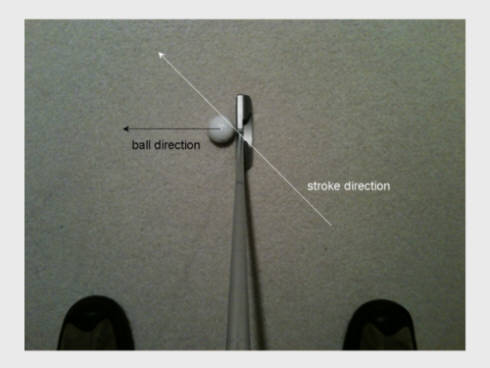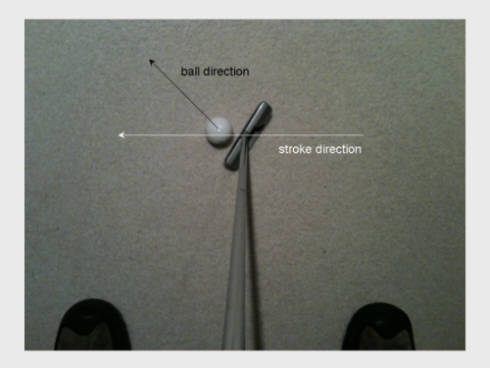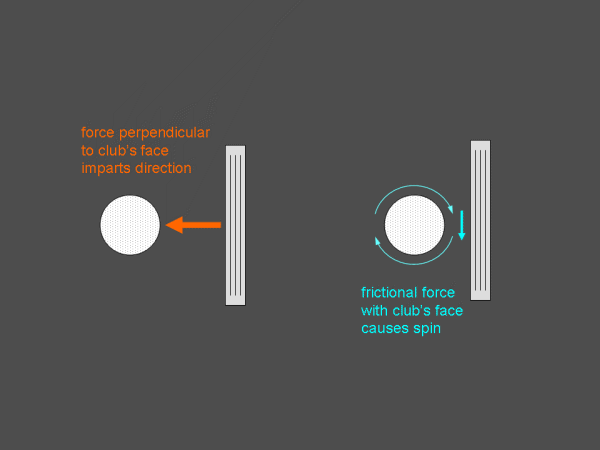

The Only Two Things that Matter
Club Orientation
and
Club Direction
When a golf ball is hit by a golf club, the ball receives an impulse in the direction perpendicular to the face of the club. In order to understand this more easily, perform this simple exercise with a putter. Place a ball on a flat surface (carpet or green) and aim it at a target (hole), then rotate the putter so the head is oriented about 45 degrees open. Now stroke the ball on a straight line toward the target with the head way open. Which way does the ball go? It travels mostly perpendicular to the putter face, about 45 degrees off target. Now align the putter face toward the target, but this time pull the putter back along a path about 45 degrees away from the intended direction and then stroke the ball in a direction about 45 degrees to the side of the target while keeping the putter aligned toward the hole. Now where does the ball go? Even though the club was moving in a direction not even close to at the hole, the ball goes in a direction closer to the hole.

There is also a lesson about putting here: that it is primarily important that the putter face be oriented perpendicularly to the direction that we want the ball to roll in, and that the direction that the putter moves is less important, although aligning both is necessary for the ball to go into the hole from anywhere other than short distance. The value of this example is that putting occurs at a slow enough speed that we can observe what happens, while when we hit a golf ball with a full swing, it is nearly impossible to see the orientation and direction of the club at the moment the ball is struck.
A golf club can only influence a golf ball in two ways: by a force perpendicular to the club's face and by friction parallel to the club's surface. These forces send the ball in the direction perpendicular to the clubface because the impact force is much larger than the frictional force. Friction with the clubface causes the ball to spin. This means that the orientation of the club at impact determines the initial direction of the ball. Subsequent deviation of the ball from a straight flight in that initial direction is caused by the aerodynamic force generated due to spin.
